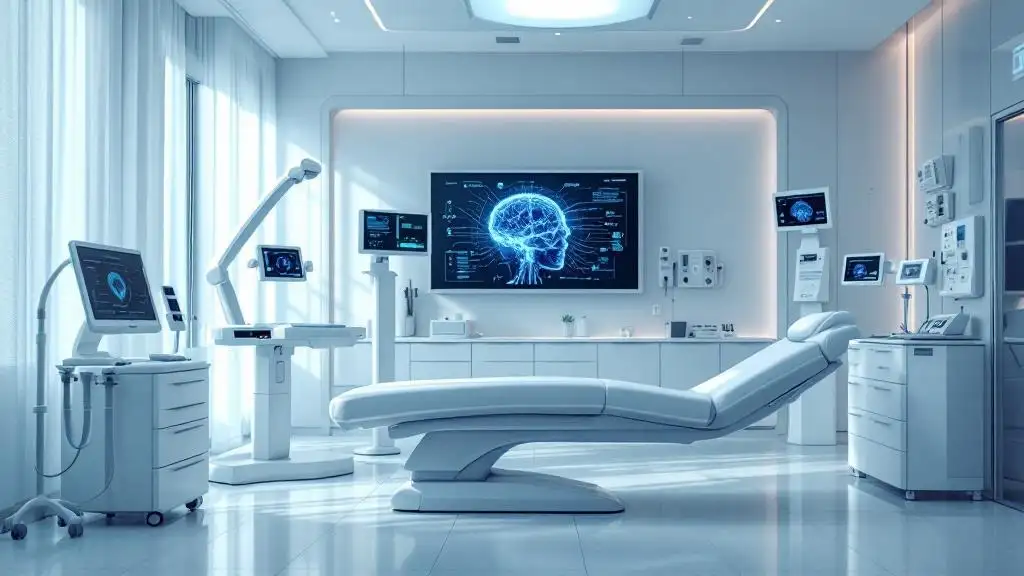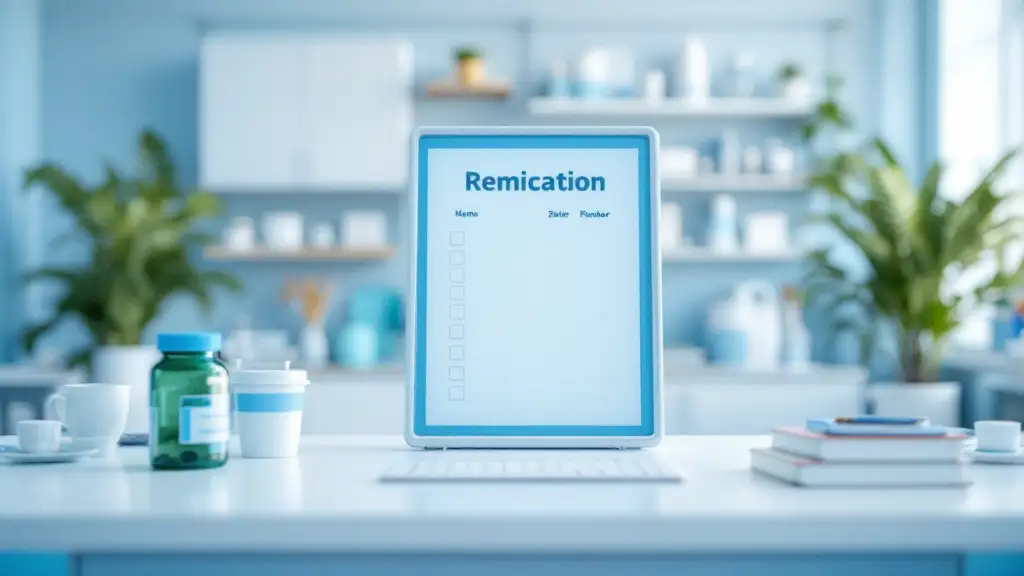Understanding ADHD Diagnosis
Attention Deficit Hyperactivity Disorder (ADHD) is a neurodevelopmental disorder marked by symptoms of impaired attention, hyperactivity, and impulsivity. Diagnosing ADHD requires a multifaceted approach that integrates clinical interviews, rating scales, and objective assessments such as neuropsychological tests. With an estimated prevalence of 5.9% in children and adolescents and 3.1% in adults, accurate diagnosis is essential to guide effective interventions across the lifespan. This article explores the diagnostic value of neuropsychological testing in ADHD, its strengths and limitations, and its role within comprehensive mental health services.
What Are Neuropsychological Tests and How Do They Help Diagnose ADHD?
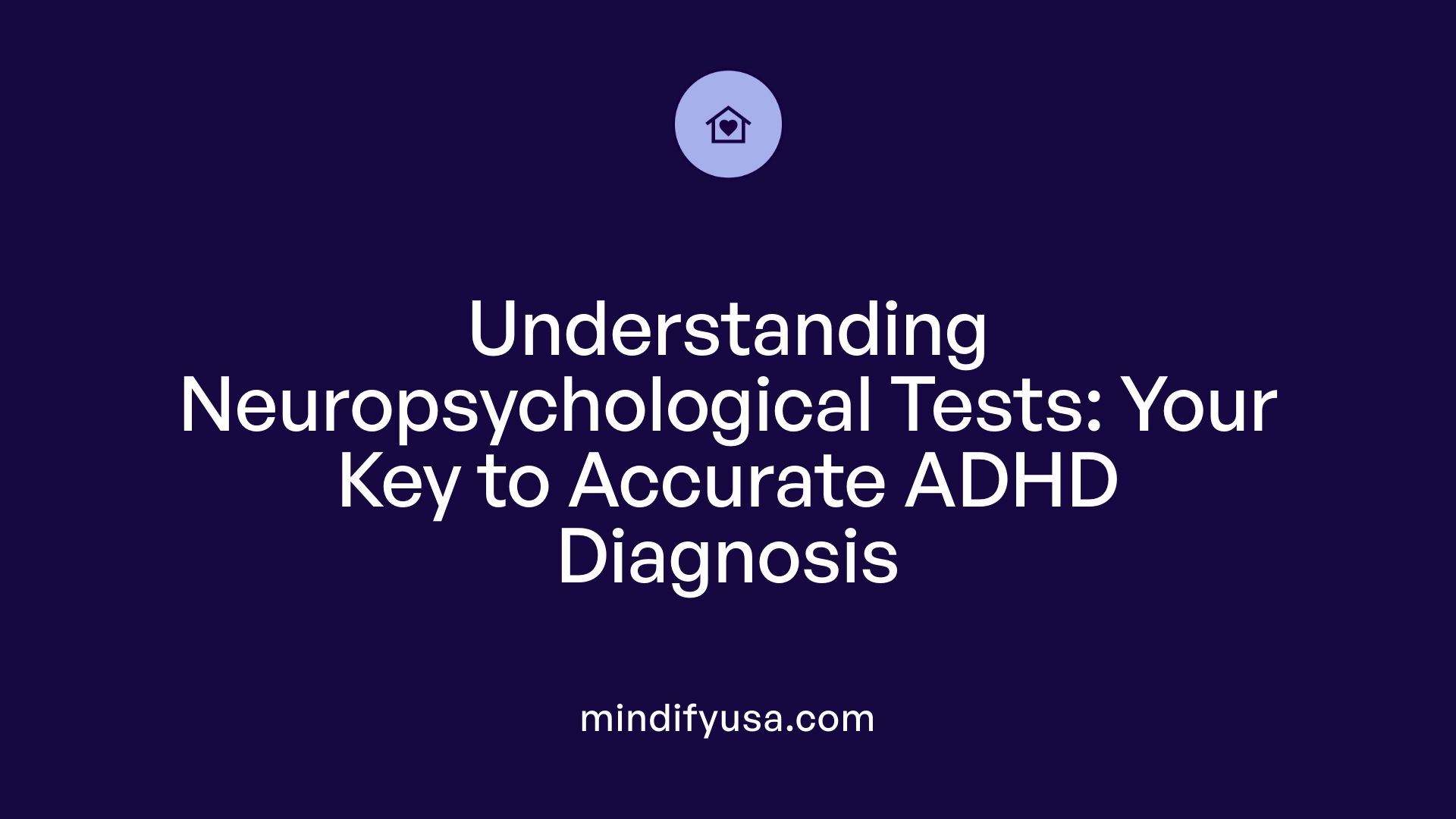
Definition and purpose of neuropsychological tests
Neuropsychological tests are specialized assessments designed to measure various cognitive functions. They provide valuable insights into an individual's mental processes, going beyond what clinical interviews and behavior checklists can reveal. In the context of ADHD, these tests help identify specific cognitive strengths and weaknesses.
Assessment of cognitive functions relevant to ADHD
These tests evaluate core areas affected by ADHD including attention, working memory, executive functioning, response inhibition, and processing speed. This detailed evaluation helps in identifying the cognitive profiles that underlie ADHD symptoms.
Examples of common neuropsychological tests used in ADHD diagnosis
Several popular tests are used in ADHD assessments:
- TOVA (Test of Variables of Attention): Measures sustained attention and impulsivity.
- CANTAB (Cambridge Neuropsychological Test Automated Battery): Assesses various cognitive domains with computerized tasks.
- Stroop Test: Examines selective attention and cognitive flexibility.
- WCST (Wisconsin Card Sorting Test): Tests executive function and problem-solving abilities.
- Continuous Performance Tests (CPTs): Evaluate sustained attention and response control.
How these tests provide objective and standardized data
Neuropsychological tests offer standardized, norm-referenced scores that eliminate much of the subjectivity inherent in clinical interviews or rating scales. This objectivity supports more accurate diagnosis, especially in complex cases or when co-occurring conditions are present. The data also assist clinicians in tailoring personalized treatment plans and recommending educational or workplace accommodations to better support individuals with ADHD.
Key Neuropsychological Tests in ADHD Assessment
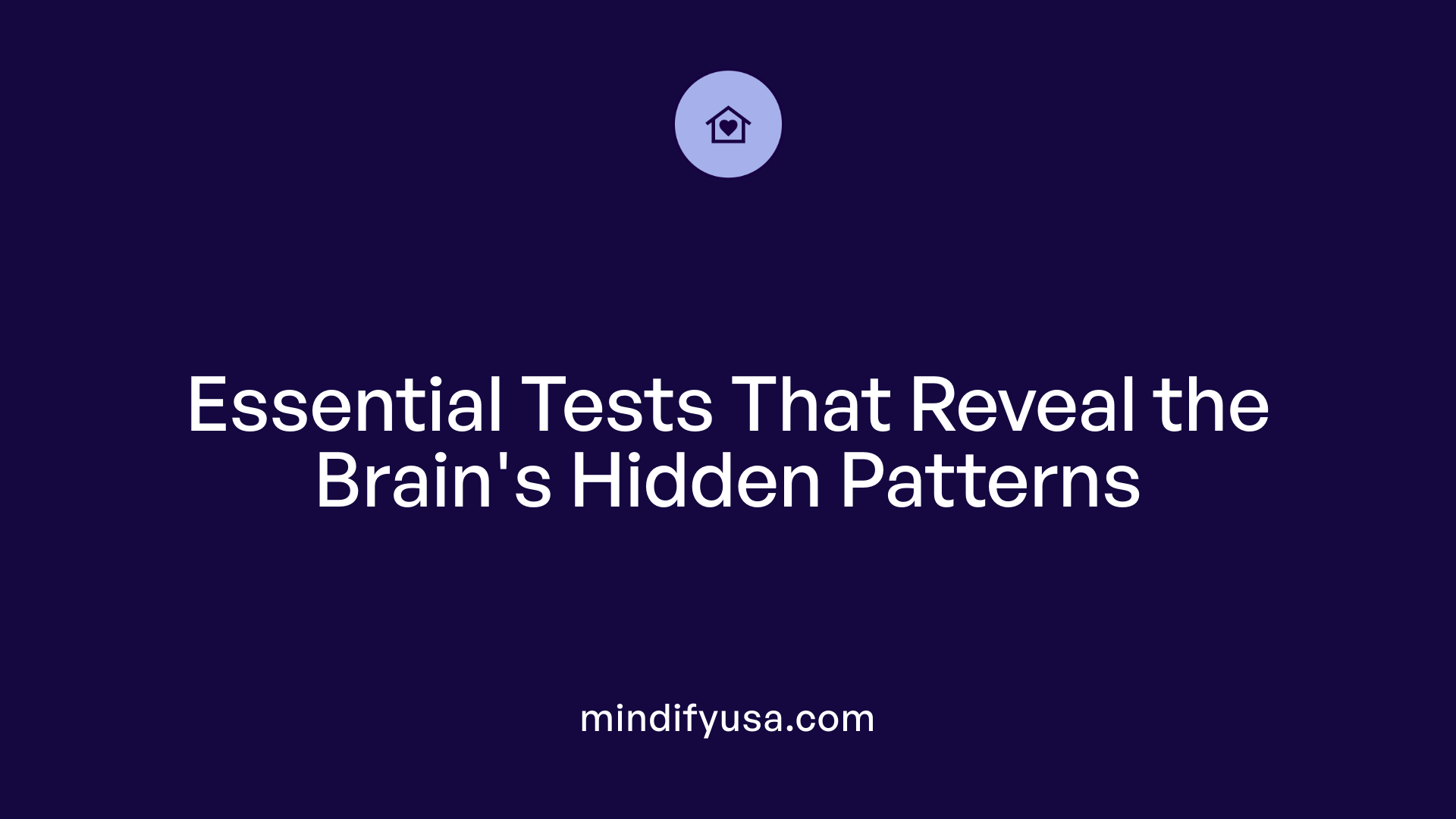
Continuous Performance Tests (e.g., TOVA, QbTest)
Continuous Performance Tests (CPTs) such as the Test of Variables of Attention (TOVA) and QbTest are widely used in ADHD evaluations. These tests are designed to objectively measure attention, impulsivity, and response inhibition by tracking the subject's reaction to stimuli over time. Although their diagnostic accuracy can vary, CPTs offer valuable data beyond subjective assessments.
Stroop Test, WCST, Digit Span, Go/No-Go Tasks
Other commonly used neuropsychological tests include the Stroop Test, Wisconsin Card Sorting Test (WCST), Digit Span, and Go/No-Go tasks. These assessments probe various cognitive domains crucial to understanding ADHD, such as executive function, working memory, and inhibitory control. For instance, the Stroop Test evaluates cognitive flexibility and selective attention, while the WCST assesses problem-solving and shifting abilities.
Computerized Batteries like CANTAB and Gamified Cognitive Training (Cogmed)
Computerized test batteries such as the Cambridge Neuropsychological Test Automated Battery (CANTAB) provide sensitive and objective measures of cognitive functioning. They allow detailed assessment of domains like sustained attention and working memory through interactive and standardized protocols. Similarly, gamified cognitive training programs like Cogmed offer assessment alongside intervention by engaging patients in memory and attention tasks designed to improve these cognitive functions.
Cognitive Domains Assessed
These neuropsychological tests collectively measure attention, working memory, executive functioning, and response inhibition—core cognitive domains implicated in ADHD symptomatology. Their use enhances diagnostic precision by capturing the specific patterns of cognitive strengths and weaknesses in individuals with ADHD, thereby informing personalized intervention plans.
Neuropsychological Testing in Differentiating ADHD from Other Conditions
Why is it challenging to distinguish ADHD from anxiety, depression, and learning disorders?
Many individuals with ADHD exhibit symptoms such as inattention, restlessness, and impulsivity that overlap with those seen in anxiety, depression, and learning disorders. This symptom similarity often complicates accurate diagnosis, especially when conditions co-occur, leading to potential misinterpretation or misclassification of the dominant issue.
How do neuropsychological tests help differentiate these conditions?
Neuropsychological assessments utilize standardized, objective measures to evaluate specific cognitive functions like attention, executive functioning, memory, and processing speed. Tests such as the Continuous Performance Test (CPT), Stroop Test, and Wisconsin Card Sorting Test (WCST) provide data that highlight distinct patterns of strengths and weaknesses unique to ADHD compared to other disorders. For example, while depression may primarily impact processing speed and motivation, ADHD is marked by deficits in response inhibition and sustained attention, which neuropsychological tests can detect precisely.
When is neuropsychological testing particularly important?
Testing is especially recommended when symptoms are complex or when there are co-occurring mental health or learning conditions. It proves crucial in cases where prior treatments have not been effective or when diagnosis is unclear through clinical interviews and rating scales alone. Through thorough evaluation, clinicians can better understand the individual’s cognitive profile and tailor interventions accordingly.
What role does a multimodal diagnostic approach play?
Combining subjective tools such as clinical interviews and rating scales with objective neuropsychological testing enhances diagnostic accuracy. This approach minimizes the risk of misdiagnosis by validating symptoms across multiple domains and sources. By integrating behavioral observations with cognitive test results, clinicians achieve a more comprehensive understanding of the individual's challenges.
Overall, neuropsychological testing forms a vital component in differentiating ADHD from other overlapping conditions, ensuring that diagnosis and treatment plans are both accurate and personalized.
Insights from Neuroimaging and Electrophysiological Studies Supporting ADHD Diagnosis

What Brain Structural and Functional Differences Are Found in ADHD?
Neuroimaging techniques like structural MRI, functional MRI (fMRI), and diffusion tensor imaging (DTI) reveal notable brain differences in individuals with ADHD. These include abnormalities in the prefrontal cortex, which plays a vital role in attention and executive function. Additionally, changes are observed in the basal ganglia and corpus callosum, regions involved in motor control and inter-hemispheric communication.
What EEG Markers Are Associated with ADHD?
Electrophysiological studies using EEG demonstrate characteristic patterns in ADHD. Common findings include elevated theta/beta power ratios, which reflect altered cortical arousal, and delayed P300 event-related potentials indicating slower cognitive processing and attentional deficits. These markers help identify neurophysiological dysfunction in attention and response control.
What Emerging Objective Tools Aid ADHD Assessment?
Recent advances introduce eye-tracking and pupillometry as promising objective tools. Eye-tracking measures attentional control by analyzing gaze patterns, while pupillometry assesses cognitive effort by monitoring pupil size changes. Both methods detect subtle abnormalities in ADHD individuals compared to typical controls, providing dynamic real-time indicators of attention regulation.
How Do These Findings Complement Neuropsychological Testing?
Neuroimaging and electrophysiological markers enrich neuropsychological assessments by offering biological evidence that supports cognitive function test results. While neuropsychological tests evaluate behaviorally observed deficits in attention, working memory, and inhibition, brain imaging and EEG provide direct insight into underlying neural mechanisms. Together, they enhance diagnostic accuracy and deepen understanding of ADHD’s neurodevelopmental basis.
Benefits and Limitations of Neuropsychological Tests in Diagnosing ADHD
Why Are Neuropsychological Tests Considered More Objective Than Clinical Interviews and Rating Scales?
Neuropsychological assessments use standardized, norm-referenced tests which provide detailed and objective measurements of cognitive functions such as attention, executive functioning, memory, and processing speed. Compared to clinical interviews and rating scales—which rely heavily on subjective reports and observations—these tests offer quantitative data that help pinpoint strengths and weaknesses in individuals with ADHD. This objectivity supports more tailored and targeted treatment strategies.
What Are the Challenges Regarding Diagnostic Accuracy and Psychometric Properties?
Despite their advantages, neuropsychological tests show variability in diagnostic accuracy. Tests like Continuous Performance Tests (e.g., TOVA, QbTest) assess attention and impulsivity but can yield inconsistent sensitivity and specificity across populations. Additionally, no single test can definitively diagnose ADHD due to overlapping symptoms with other disorders such as anxiety, depression, and learning disabilities.
How Do Contextual Factors Influence Test Results?
Multiple factors can impact neuropsychological test outcomes, including age, gender, co-occurring conditions, and testing environment. For example, comorbidities like autism spectrum disorder or mood disorders may alter cognitive profiles, making interpretation challenging. Furthermore, motivation, fatigue, and test familiarity can affect performance, requiring clinicians to contextualize results carefully.
Why Should Neuropsychological Tests Be Used Alongside Clinical Evaluations?
Given the limitations, neuropsychological testing is most effective when integrated into a multimodal diagnostic approach. Combining these tests with clinical interviews, rating scales, and behavioral observations enhances diagnostic accuracy and helps differentiate ADHD from other conditions. This comprehensive evaluation supports the development of personalized intervention plans and informs educational or workplace accommodations.
The Role of Neuropsychological Testing in Personalized ADHD Treatment Planning
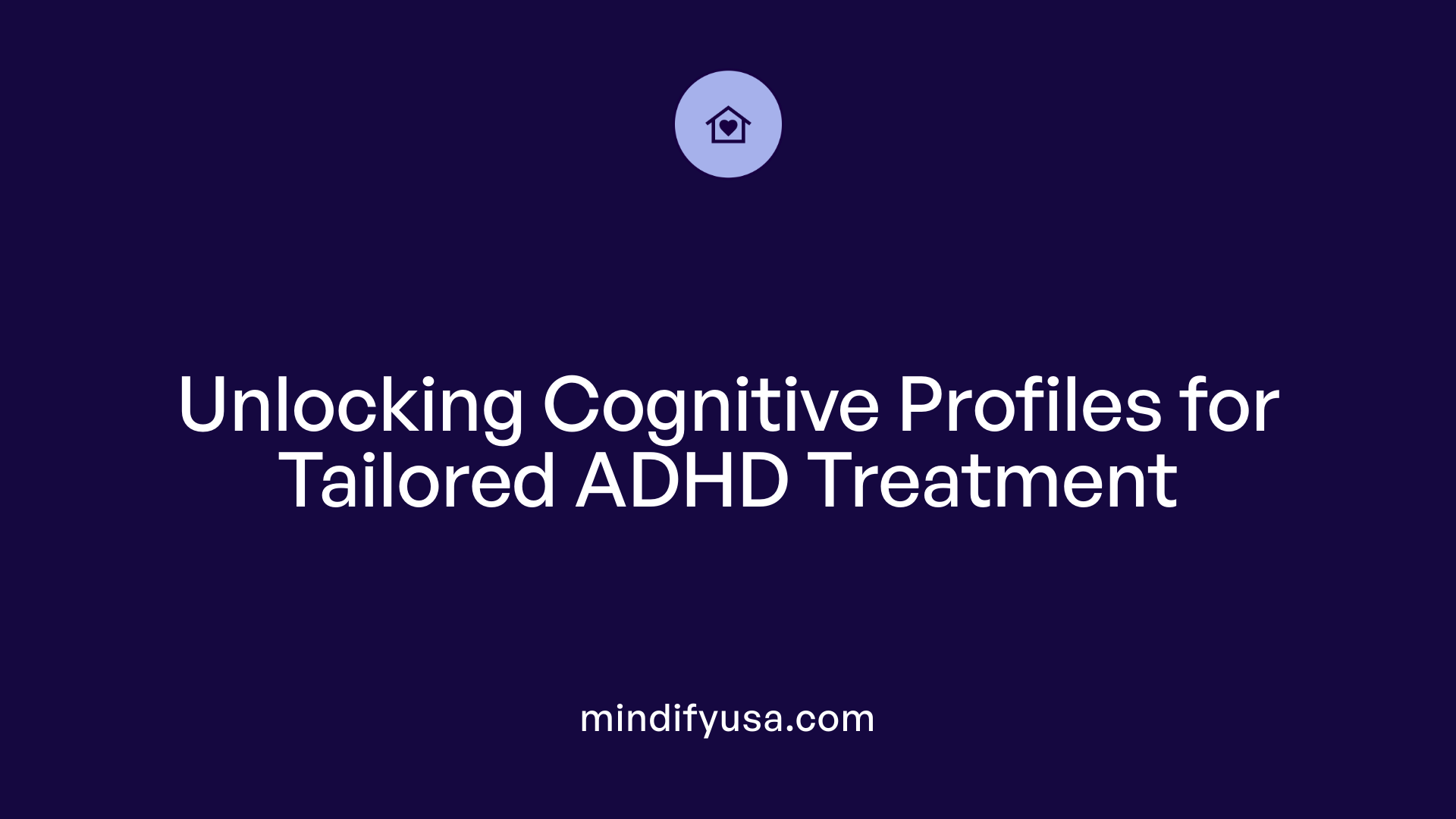
Identifying Cognitive Strengths and Weaknesses
Neuropsychological testing plays a crucial role in assessing the diverse cognitive functions affected by ADHD. Tests like the Continuous Performance Test (CPT), Stroop Test, and Wisconsin Card Sorting Test (WCST) quantify attention, executive function, and response inhibition capabilities. Understanding these cognitive strengths and weaknesses helps clinicians design tailored treatment strategies that target individual deficits while leveraging preserved abilities.
Establishing Baseline Performance for Monitoring Treatment Progress
Detailed, norm-referenced neuropsychological assessments provide an objective baseline of cognitive functioning before treatment begins. This baseline is essential for objectively monitoring symptom changes and therapeutic effectiveness over time, ensuring that interventions adapt to evolving patient needs.
Supporting Educational and Workplace Accommodations
Results from neuropsychological evaluations guide recommendations for accommodations in academic and occupational settings. By documenting specific cognitive challenges and capacities, these assessments enable stakeholders to implement supportive measures such as extended time, structured environments, or assistive technologies that enhance daily functioning and productivity.
Informing Therapeutic Interventions
Neuropsychological data inform personalized intervention plans encompassing cognitive behavioral therapy (CBT), neurofeedback, cognitive training, occupational therapy, and physical exercise. These approaches aim to improve neuropsychological functioning by enhancing attention, working memory, and executive control, thereby reducing ADHD symptoms and improving quality of life.
Through these multidimensional roles, neuropsychological testing elevates ADHD care from generalized approaches to individualized treatment, fostering better outcomes across multiple life domains.
Challenges in Adult ADHD Diagnosis and Implications for Mental Health Services
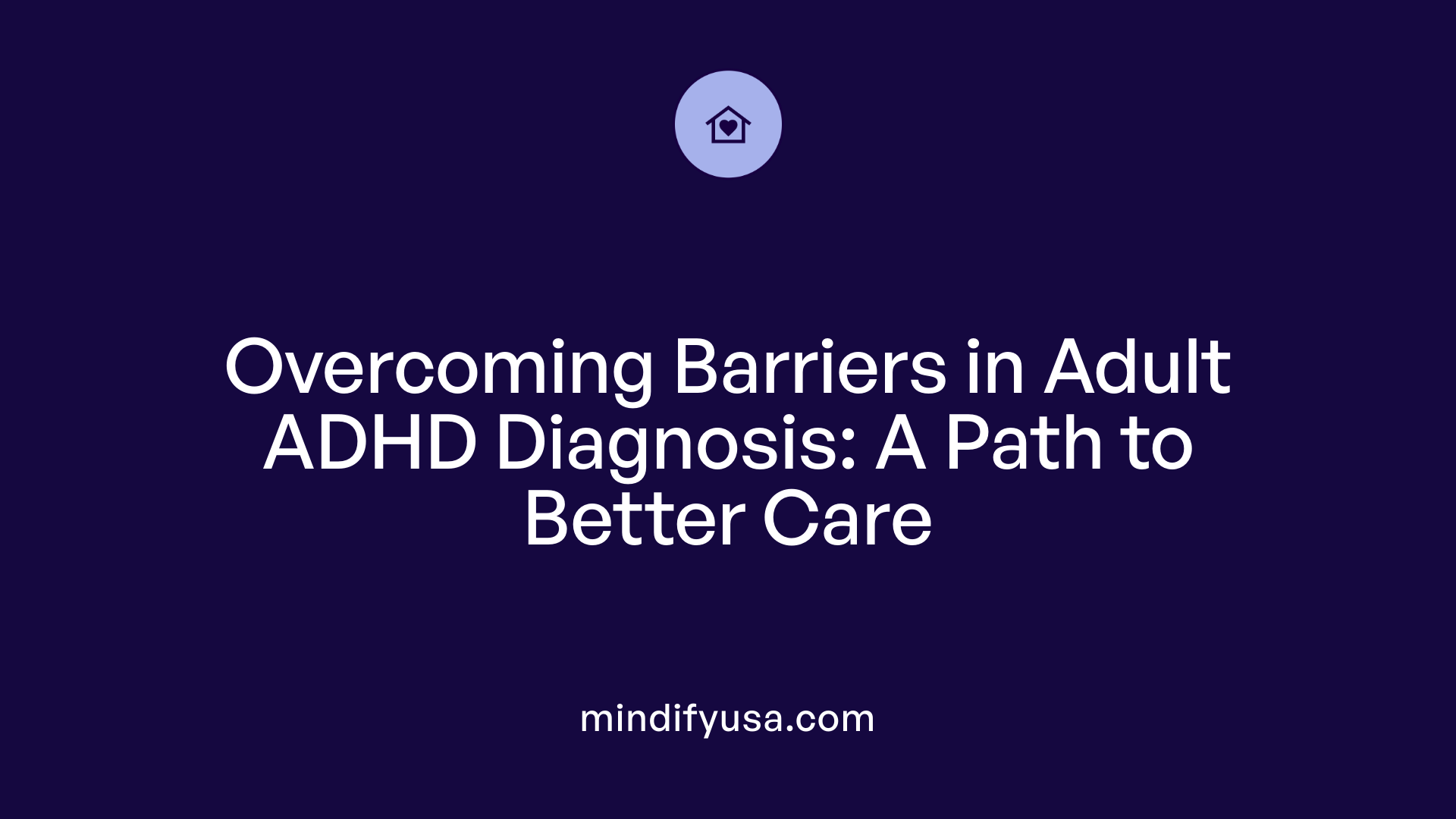
How common are persistent ADHD symptoms in adults?
Approximately 40-50% of children diagnosed with ADHD continue to experience symptoms into adulthood. These ongoing symptoms often involve persistent impairments in reward processing and decision-making, which can significantly affect daily functioning.
What barriers exist to diagnosing ADHD in adults?
Diagnosing ADHD in adults presents notable challenges. Symptoms can be less obvious or may overlap with other conditions such as anxiety and depression, making accurate identification difficult. Additionally, the variability in symptom expression across individuals and gender complicates recognition. Many adults may not have been diagnosed in childhood, leading to gaps in their medical history and further hindering diagnosis.
How do these barriers affect access to mental health services?
These diagnostic challenges limit adults' access to comprehensive mental health care. Without a clear diagnosis, patients may not receive targeted interventions, which reduces the overall effectiveness of treatment. Barriers also contribute to underdiagnosis, leaving many adults without essential support and leading to untreated symptoms that impact quality of life.
Why is understanding these challenges significant for treating co-occurring conditions?
Adults with ADHD frequently experience co-occurring disorders such as anxiety and depression. Difficulty in diagnosing ADHD can delay or complicate treatment for these conditions. Improved recognition and diagnosis of adult ADHD are crucial for tailoring effective mental health interventions, addressing all co-occurring symptoms, and ultimately improving outcomes for affected individuals.
Future Directions and Clinical Guidelines in ADHD Diagnostic Practices
What insights have large-scale literature reviews provided regarding ADHD diagnosis?
Recent comprehensive literature reviews, including one by researchers at USC analyzing over 23,000 publications with 550 selected rigorous studies, have synthesized current knowledge on ADHD diagnosis and treatment. These reviews emphasize the complexities of ADHD, highlight the strengths and limitations of various diagnostic tools, and underscore the importance of multimodal assessment methods combining objective testing, clinical interviews, and rating scales. They document ongoing challenges such as variability in test psychometric properties and the influence of contextual factors.
How have updated DSM-5 criteria influenced ADHD diagnosis?
The DSM-5 revisions introduced broader symptom definitions and criteria enabling the diagnosis of ADHD in adults, increasing overall sensitivity. This acknowledges persistent ADHD symptoms beyond childhood and adjusts for diverse symptom presentation. However, the broadened criteria have raised concerns about potential over-diagnosis, underscoring the need for careful clinical judgment and complementary objective testing.
What emerging biomarkers and monitoring methods are shaping ADHD assessments?
Cutting-edge tools are enriching ADHD diagnostics by providing objective biological and cognitive indicators. Neuroimaging (fMRI, DTI) reveals characteristic brain structure and function variations, particularly in attention-related regions. Electrophysiological markers like EEG theta/beta ratios offer insights into attention and processing deficits. Biochemical markers—cortisol, vitamin D levels, and inflammatory cytokines—are correlated with symptom severity and neuroinflammation. Novel real-time assessments such as eye-tracking, pupillometry, and continuous actigraphy monitor attentional control and activity fluctuations. Additionally, gut microbiome differences highlight potential new biomarker avenues, with emerging dietary interventions targeting symptom modulation.
What is the role of clinical practice guidelines in enhancing evidence-based ADHD care?
The in-depth reviews and emerging evidence inform updated clinical guidelines, notably those from the American Academy of Pediatrics. These guidelines aim to standardize and optimize ADHD care by integrating the latest diagnostic innovations, promoting multimodal evaluations to improve accuracy, and emphasizing individualized treatment plans. They facilitate healthcare providers' access to evidence-based protocols, ensuring interventions—both pharmacological and psychosocial—are applied effectively. Furthermore, guidelines highlight the importance of monitoring treatment progress longitudinally to adapt care as needed.
Through these advances, the field moves towards more precise, objective, and personalized approaches to ADHD diagnosis and management, enhancing outcomes across the lifespan.
Towards Accurate and Comprehensive ADHD Diagnosis
Neuropsychological testing plays a critical role in the complex process of diagnosing ADHD by objectively assessing cognitive functions affected by the disorder. While no single test can definitively diagnose ADHD, these assessments complement clinical interviews, rating scales, and emerging diagnostic technologies to build a robust symptom profile. Their value lies not only in diagnosis but also in tailoring personalized treatments and accommodations that enhance quality of life. Challenges remain, particularly in adult diagnosis and in differentiating ADHD from co-occurring conditions. Continued research, integration of multimodal approaches, and updated clinical guidelines will remain essential to optimize ADHD diagnosis and ensure individuals receive comprehensive mental health services tailored to their unique needs.
References
- ADHD and Neuropsychology: Developmental Perspective, ...
- Is Neuropsychological Testing Necessary for ADHD?
- Evaluating attention deficit and hyperactivity disorder (ADHD)
- Sweeping review reveals latest evidence on the diagnosis ...
- Biomarkers and Neuropsychological Tools in Attention ...
- Barriers to Attention-Deficit/Hyperactivity Disorder Diagnosis ...




















